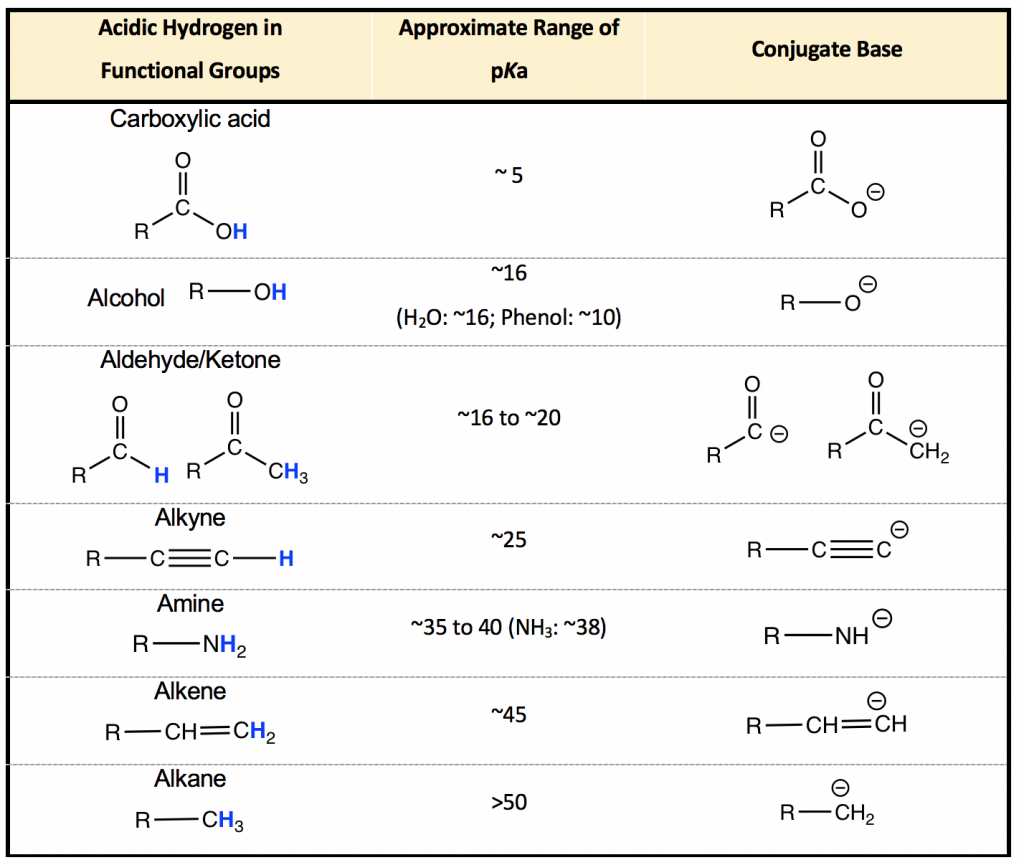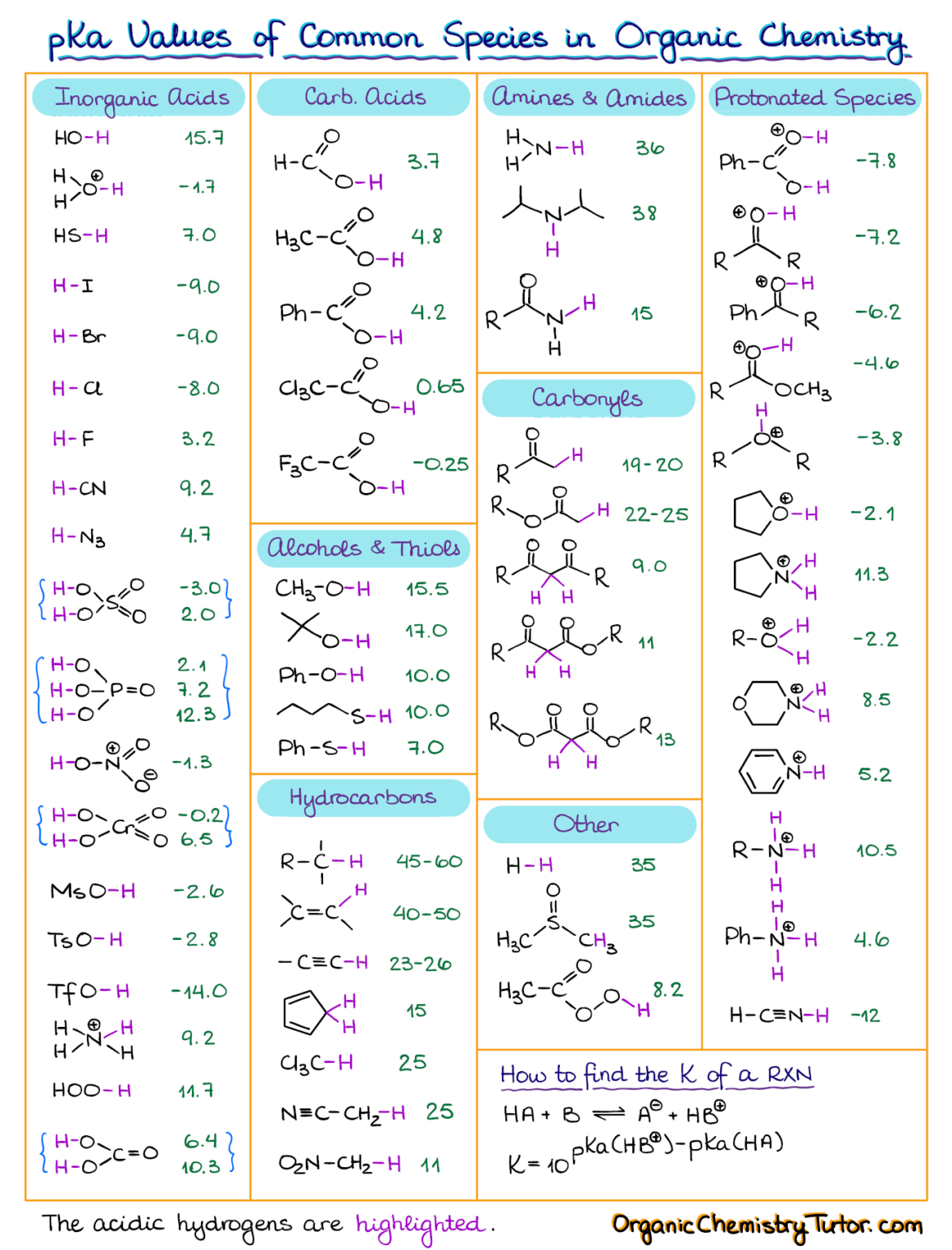how to determine pka values Chemistry pka chemie biochemie organische lernen pkas masterorganicchemistry chimie notizen alkyl werte klinische friend mathematik abitur naturwissenschaft biowissenschaft acide biologie
If you’ve ever struggled with finding the pKa of a molecule, don’t worry - you’re not alone. It can be a tricky concept to navigate, but fortunately there are several resources available to help make it easier. One great tool is the pKa table, which provides valuable information for understanding acid-base reactions.
What Is pKa?
Before we dive into the table, let’s first review what pKa actually is. In chemistry, the pKa of a molecule refers to the acidity of its hydrogen ions. It is a measure of a molecule’s tendency to lose a proton. Essentially, the lower the pKa value, the stronger the acid will be.
Understanding pKa is important for a variety of reasons. For example, it can help predict how a molecule will react in different environments, which is crucial for many applications in chemistry and biochemistry.
The pKa Table
If you’re looking to gain a better understanding of pKa, the pKa table is an incredibly useful resource. It provides easy-to-read information about the acidity of different molecules, which can help you determine how acidic or basic a given substance will be.
For instance, the table can help you determine the pKa of common acids and bases, including acetic acid, ammonia, hydrochloric acid, and sulfuric acid. From there, you can use this information to better understand how these substances will interact in different scenarios.
How to Use the Table
The pKa table is simple to use. It lists common acids and bases, along with their corresponding pKa values. To use it, simply locate the molecule you’re interested in and find its accompanying pKa value. From there, you can use this information to determine the strength of the acid or base.
One important thing to keep in mind is that pKa values are dependent on temperature, solvent, and other conditions. As such, it’s important to use the values from the table as a starting point and adjust as needed based on your particular situation.
Conclusion
The pKa table is an invaluable resource for anyone looking to deepen their understanding of acid-base reactions. By providing easy-to-read information about the acidity of different molecules, it can help you make more informed decisions about how to approach different chemical scenarios.
 Whether you’re a chemistry student, researcher, or simply someone interested in understanding the world around you, the pKa table can offer valuable insights into the complex world of acids and bases.
Whether you’re a chemistry student, researcher, or simply someone interested in understanding the world around you, the pKa table can offer valuable insights into the complex world of acids and bases.
If you are searching about The pKa Table Is Your Friend | Organic chemistry, Chemistry education you’ve visit to the right page. We have 5 Pics about The pKa Table Is Your Friend | Organic chemistry, Chemistry education like How To Find Pka From Ph Graph, The pKa Table Is Your Friend | Organic chemistry, Chemistry education and also Calculating pKa - YouTube. Read more:
The PKa Table Is Your Friend | Organic Chemistry, Chemistry Education
 www.pinterest.comchemistry pka chemie biochemie organische lernen pkas masterorganicchemistry chimie notizen alkyl werte klinische friend mathematik abitur naturwissenschaft biowissenschaft acide biologie
www.pinterest.comchemistry pka chemie biochemie organische lernen pkas masterorganicchemistry chimie notizen alkyl werte klinische friend mathematik abitur naturwissenschaft biowissenschaft acide biologie
3.3 PKa Of Organic Acids And Application Of PKa To Predict Acid-Base
 kpu.pressbooks.pubpka acids functional approximate carboxylic nh3 outcome predict amine pressbooks kpu
kpu.pressbooks.pubpka acids functional approximate carboxylic nh3 outcome predict amine pressbooks kpu
How To Find Pka From Ph Graph
topptutors.blogspot.compka ph graph acids
Calculating PKa - YouTube
 www.youtube.compka calculating
www.youtube.compka calculating
Acid-Base Equilibrium Part 1: How To Use The PKa Table — Organic
 www.organicchemistrytutor.compka bases equilibrium acids organicchemistrytutor orgo
www.organicchemistrytutor.compka bases equilibrium acids organicchemistrytutor orgo
Pka ph graph acids. Acid-base equilibrium part 1: how to use the pka table — organic. Chemistry pka chemie biochemie organische lernen pkas masterorganicchemistry chimie notizen alkyl werte klinische friend mathematik abitur naturwissenschaft biowissenschaft acide biologie